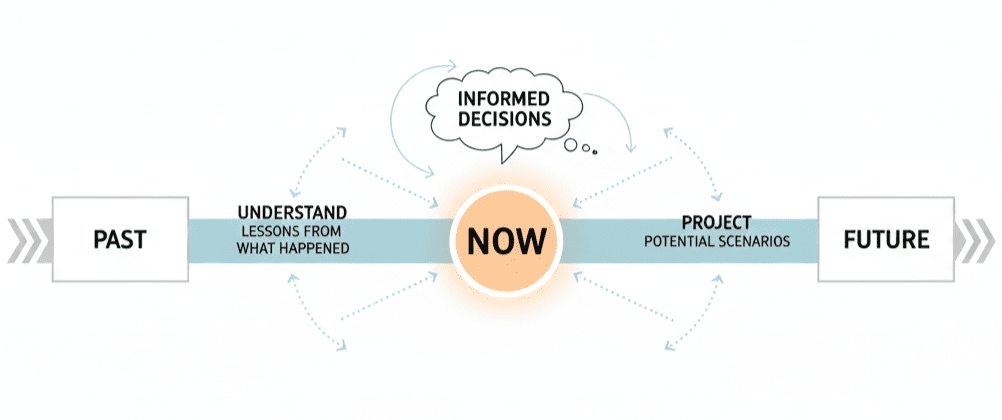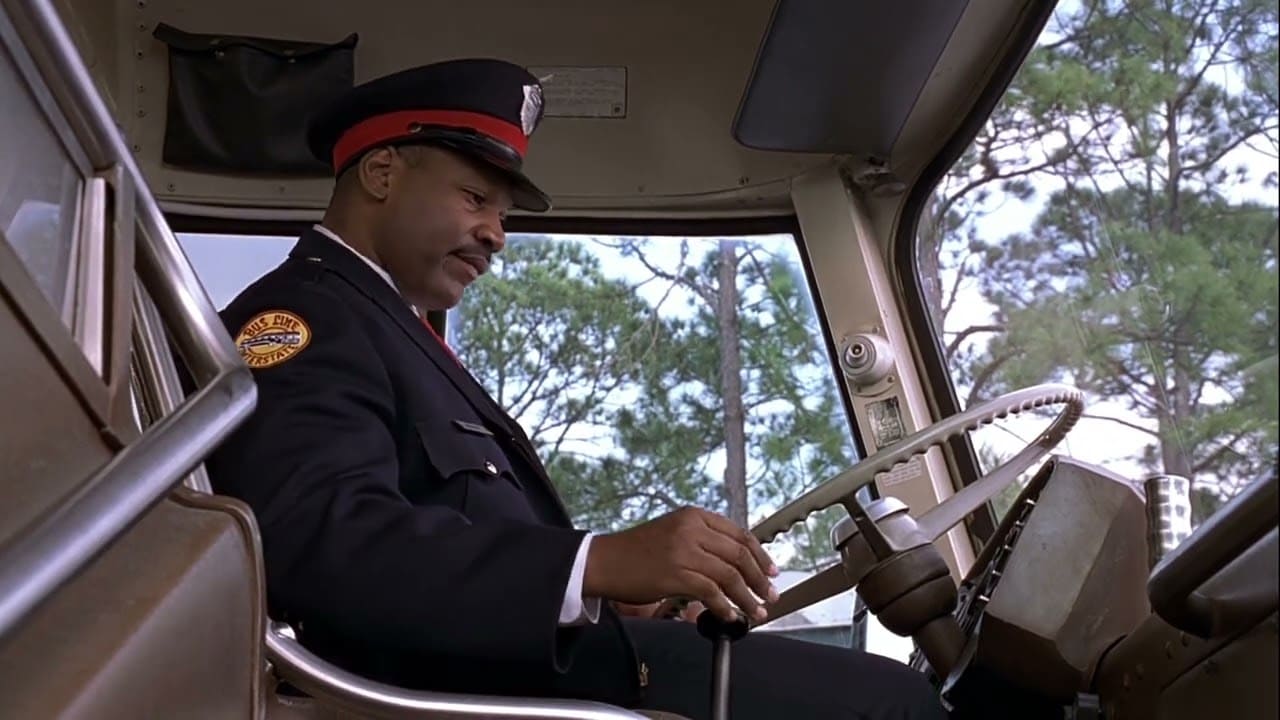Unraveling the Now: The Powerful Connection Between Past, Present, and Future
We live in a constant present — an “eternal now” that feels fleeting, yet is actually the convergence point of everything that has been and the springboard toward what will be. To make truly informed decisions, it’s not enough to analyze today; we must understand where we come from and where we might be heading. As the image illustrates, the NOW is the epicenter of a dynamic analysis that forces us to look backward to understand and forward to project.
Diagnosing the Present: The SWOT as an Instant Snapshot
In strategic analysis, the classic tool for understanding the “here and now” is the SWOT (Strengths, Weaknesses, Opportunities, Threats). It’s a crucial snapshot of our current situation — a diagnosis revealing our internal state (strengths and weaknesses) and the external forces surrounding us (opportunities and threats).
Yet the SWOT is just the beginning. To make it truly valuable, we must add depth, especially in its external dimension. Not all opportunities and threats are created equal. By assigning each one a level of impact and probability, we transform static lists into a dynamic submatrix. Suddenly, we move from diagnosis to anticipation — starting to “shift our analytical hips” and project: which threats are most likely and harmful? Which opportunities are most accessible and rewarding?
From Diagnosis to Action: The CAME Framework and the Need to Go Further
Once our enhanced SWOT is complete, the logical next step is the CAME framework (Correct, Address, Maintain, Exploit). It provides a practical response to each quadrant of the SWOT, turning diagnosis into strategic action:
- Correct weaknesses
- Address threats
- Maintain strengths
- Exploit opportunities
CAME is indispensable for moving from reflection to execution. But is it enough? Can we build truly robust future scenarios without a deep retrospective lens?

“History Doesn’t Repeat Itself, But It Often Rhymes”
This is where the retrospective perspective comes into play. Looking back isn’t about being stuck in the past — it’s about extracting meaningful patterns. Mark Twain’s famous phrase, “History doesn’t repeat itself, but it often rhymes,” captures this perfectly.
Analyzing past disruptive moments helps us identify patterns of change, the signals that were ignored, and the reactions that shaped entire industries.
Not every wave of innovation has been truly disruptive; the key lies in distinguishing which ones were, and why. Looking backward allows us to piece together the puzzle of innovation and disruption.
[I have already addressed a similar approach in the Innovation Analysis: Back & Forth Methodology model, a way to understand innovation through the dialogue between past and present.]
Consider a few examples:
- Music and the MP3: The traditional music industry focused on perfecting CD distribution, while the real disruption was already unfolding through digital compression. The MP3 didn’t just change the format — it blew up the entire business model, reshaping distribution and consumption. iTunes, and later streaming, finished what the industry failed to anticipate.
- Photography and the digital leap: For decades, camera innovation meant faster film or sharper lenses. But digital photography — initially dismissed by giants like Kodak — upended the model. Bound by the success of its film business, Kodak ignored the “rhyme” of physical-to-digital transformation, and the market moved on without it.
- Transport and ride-hailing: The taxi industry, long protected by regulation, was shaken by ride-hailing platforms. The technology already existed, but the disruption came from reconfiguring supply and demand through digital infrastructure and the sharing economy. Those who missed the “rhyme” of digital disintermediation were left behind.
Projecting Scenarios with Substance: Beyond Intuition
Understanding the past gives us the critical perspective needed to approach the future. It helps us recognize not just potential disruptions, but also early signals and catalysts. Combining a robust SWOT/CAME analysis with historical insight allows us to project future scenarios with a stronger sense of probability and impact.
It’s not about predicting the future with precision — it’s about constructing a portfolio of plausible futures, assigning probabilities based on data, trends, and, crucially, the wisdom drawn from past transformations. This approach helps us prepare, design contingencies, and, most importantly, identify opportunities to become disruptors rather than the disrupted.
The “Now” as a Bridge
In the end, the “Now” is not an island — it’s a bridge. A bridge built on the lessons of the past, carrying us toward a future we can model and anticipate more intelligently if we learn to connect the dots. Strategic thinking should move beyond the static photo and embrace the full motion picture.



